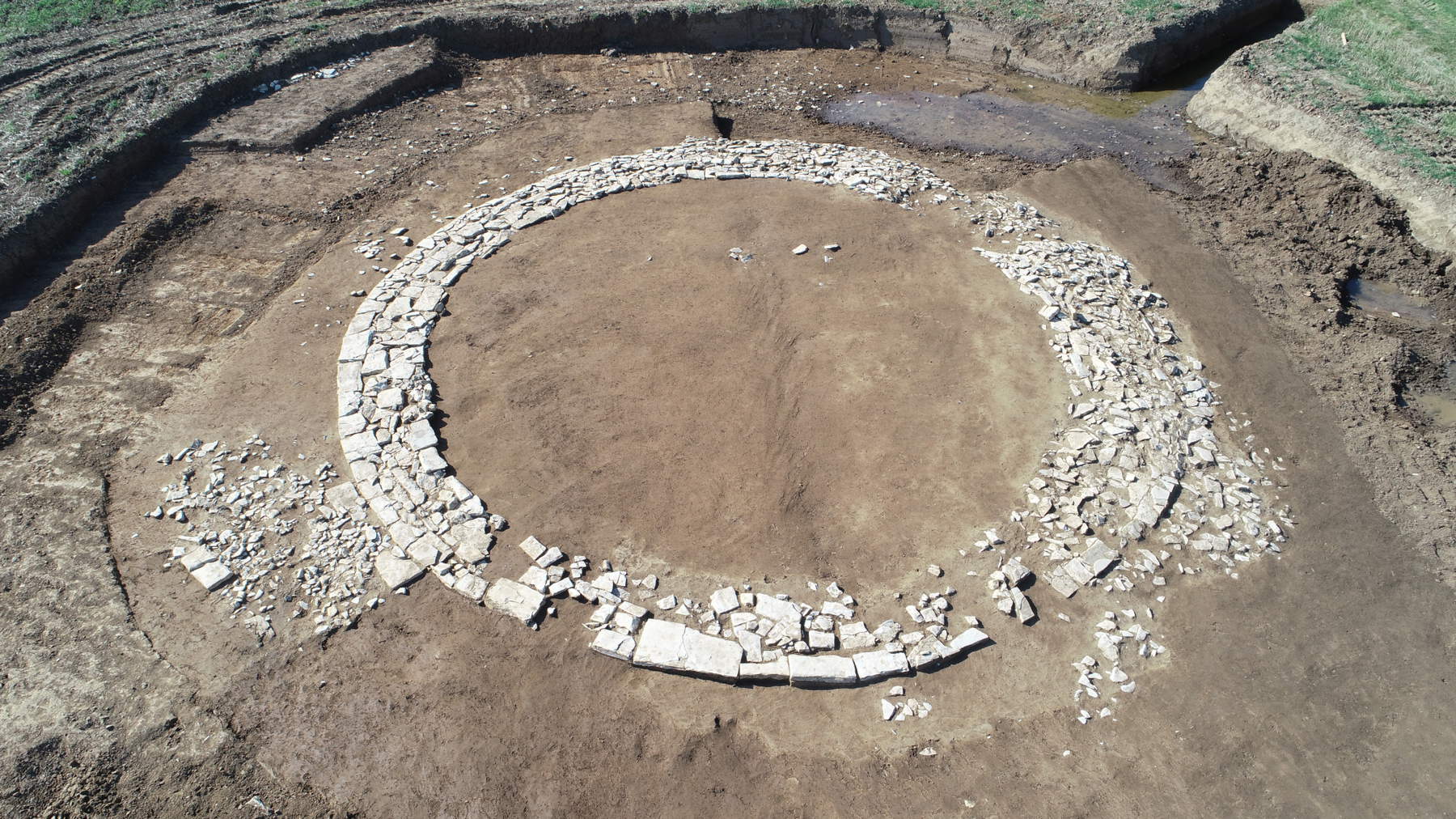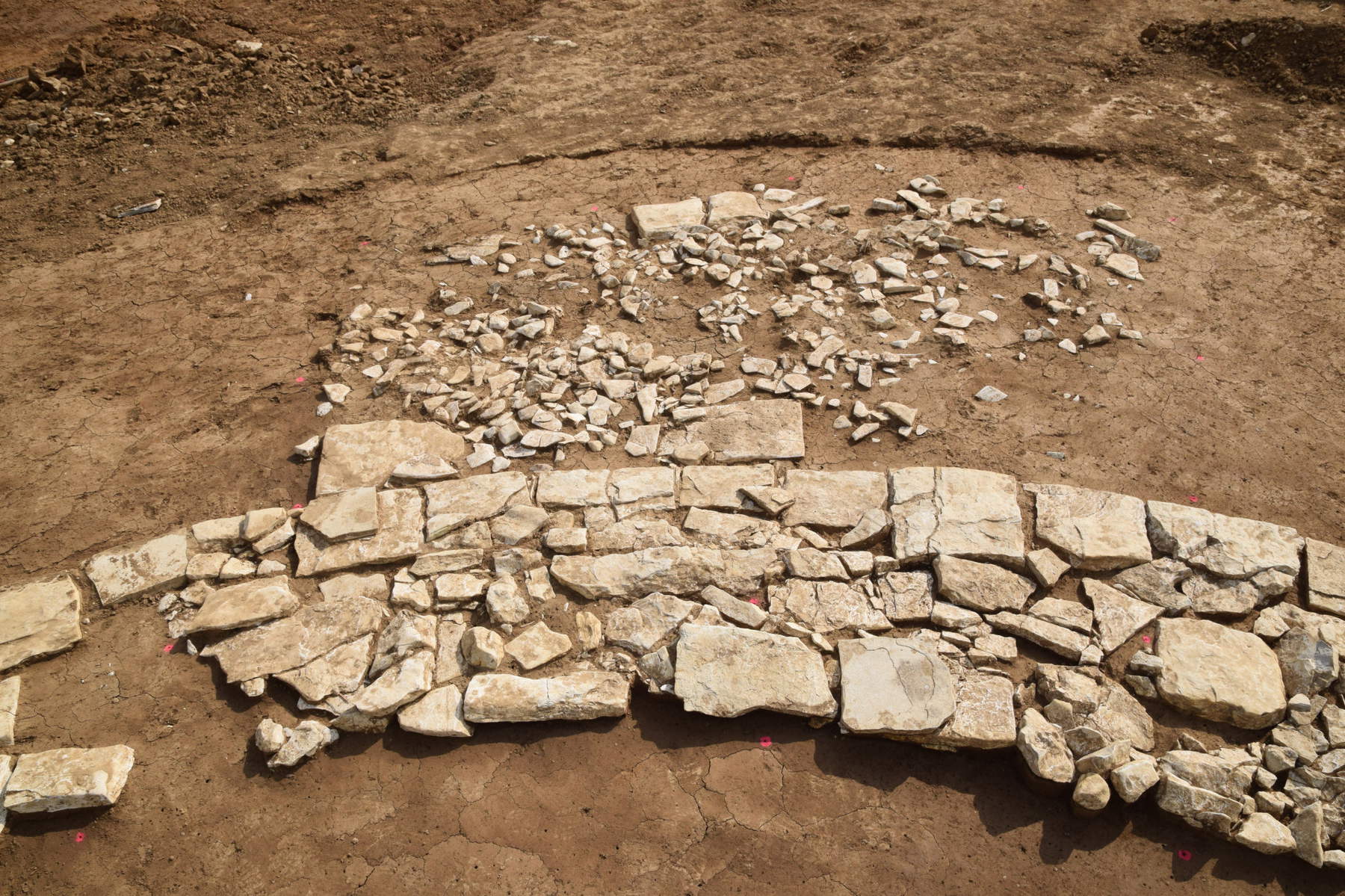In the district of Eichstätt in Upper Bavaria, an extraordinary piece of evidence from the Roman era has emerged: the foundations of a burial mound from the Imperial period. This is a rare find for the ancient province of Raetia, which once included much of southern Germany as well as portions of Switzerland and Tyrol.
During work on the construction of a rainwater catchment area, which began in the fall of 2024 near Wolkertshofen, near Nassenfels, archaeologists identified a circular stone complex about twelve meters in diameter, flanked by asquare extension two meters on each side, probably the base of a stele or memorial statue. The accuracy of construction and the regularity of the worked stones leave no doubt that this is a Roman funerary structure of considerable importance. The discovery came about as part of a collaboration between the municipality of Nassenfels, the commissioned archaeological study and the Bayerisches Landesamt für Denkmalpflege (BLfD), the Bavarian State Office for the Protection of Archaeological Property. The area was already known for its wealth of ancient evidence, with remains ranging from the Neolithic to the early Middle Ages.


At first, excavations had returned only traces of prehistoric settlements and ceramic fragments; later, the discovery of the stone circle opened up new perspectives for study. The high quality of construction and the location-in close proximity to a Roman road that connected Nassenfels to the Altmühl valley, and not far from a villa rustica, a typical Roman agricultural estate-suggest that the monument was intended for a person of high rank or a place of public remembrance. However, the absence of human remains or grave goods inside the mound leads scholars to speculate that it was a cenotaph, that is, a symbolic tomb erected in honor of someone buried elsewhere.
In the Roman world, burial mounds represented an ancient tradition, rooted as much in Italy as in central Europe. Beginning in the first century CE, these structures also spread to the northwestern provinces of the Empire, sometimes reusing preexisting Bronze or Iron Age sites. Some archaeologists interpret this phenomenon as a conscious reference to ancient Celtic burial practices.
Although other Roman-era burial complexes are known in the Augsburg area, a mound of this size and with such a well-preserved stone wall structure is unique to Rhaetia. The Wolkertshofen tomb thus confirms itself as an exceptionally valuable discovery, destined to provide new information about the Roman presence in Bavaria and the relationship between funerary architecture, memory, and territory in the ancient world.
 |
| Rare circular stone complex discovered in Germany: it is a Roman-era burial mound |
Warning: the translation into English of the original Italian article was created using automatic tools. We undertake to review all articles, but we do not guarantee the total absence of inaccuracies in the translation due to the program. You can find the original by clicking on the ITA button. If you find any mistake,please contact us.